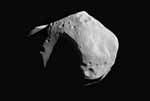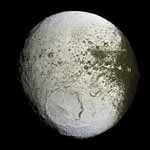The Mysteries Project #2: The Exploding Planet Hypothesis and the Origin of the Asteroid Belt
(Updated 29 June 2011)
(Hint: For a treat, try watching the above video full screen at 1080p.)
Ever wonder how the asteroid belt formed? The prevailing theory says that it is essentially a planet that never formed out of the original primeval solar nebula of gas and dust. However, there are huge problems with this theory. For example, the asteroids are large rocks that arguably needed a significant gravity source in order to form in the first place. The late astronomer Tom Van Flandern, who led the Celestial Mechanics Branch of the Nautical Almanac Office at the U.S. Naval Observatory in Washington, D.C. from 1963 to 1983, developed an alternate theory explaining the origin of the asteroid belt which he described in detail in his book: Dark Matter, Missing Planets, & New Comets. His idea is that a planet once existed in that location in our solar system, and it exploded. We call this the "exploding planet hypothesis." This theory has been widely ridiculed in mainstream astronomical circles, mainly because of resistance by mainstream astronomers to the idea that planets could explode in the first place. We decided to use remote viewing to take a look and see what actually happened. Look at the data yourself, and then you decide.
There are three remote-viewing targets for this study. The first target is the asteroid "433 Eros" (a siliceous or S-type asteroid) at the moment of its creation. The second target is the asteroid "253 Mathilde" (a carbonaceous or C-type asteroid) at the moment of its creation. The final target involves Iapetus, the icy moon of Saturn. Iapetus has a dark "splat" on one side, and Tom Van Flandern hypothesized that this splat was the result of an impact with a huge debris wave that ran throughout the solar system when the planet exploded that created the asteroid belt. Thus, the final target involves the origin of the dark splat on Iapetus.
Principal Investigator: Courtney Brown
| ||||||


